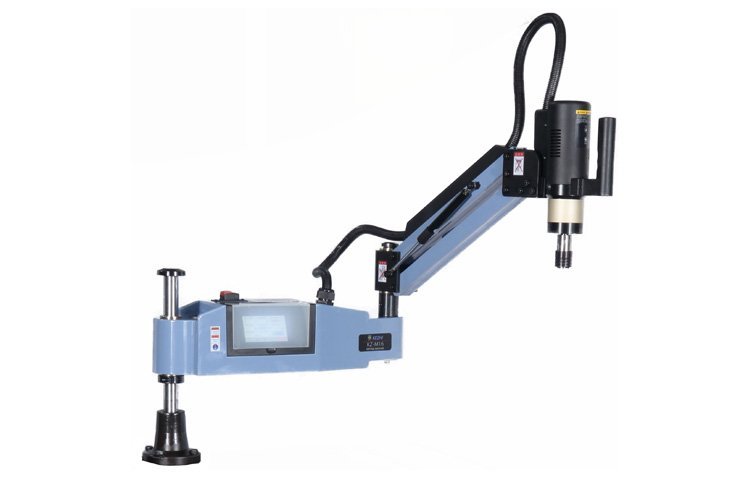Tapping machines are a handy tool for any job requiring joining two pieces of metal. In many different kinds of projects, tapping machines can save a lot of time and effort. Drilling holes for screws or bolts are made more accessible with the aid of this equipment. Unlike a tap and die, a tapping machine requires less effort. Machines like this play a crucial role in the production of metal goods.
Creating screw threads by tap and die is a very complex process requiring several different tools. A lack of attention to detail will lead to other errors during the tapping process. Even the tiniest details can lead to unusable threads or taps that fail.
Holes have a critical role in tapping.
It’s not easy to tap holes on the go. If the hole is tapped incorrectly, the thread finish or size may be incorrect, resulting in a tap failure.
Despite the importance of avoiding errors, perfection is not always possible. However, according to North American Tool, it is still vital to repair as many errors as possible before threading. Screw threads that have been improperly threaded will no longer function.
Ways to Prevent Unhealthy Situations
It is crucial to consider the hole’s size while preparing it for tapping. This dimension is critical since holes can withstand more significant torque if necessary. An increase in torque indicates that a spot requires additional strength.
Taping holes is another issue that needs to be addressed. Most of the time, they either narrow or remain straight. To get there, you’ll need to use a variety of approaches:
Drilled
Bored
Cored
Extruded
Punched
While these techniques aid in the tapping process, they are not without their own set of drawbacks.
The Tapping Process Allows for Additional Factors
According to Engineers Edge, work-hardening, the process of making metals harder and stressing the substance beyond its yield point, can occur when tools are broken or dull when boring or drilling holes. It becomes more difficult for humans and machines to cut and thread if a metal hardens.
During the tapping process, those same human technicians must consider additional information about the equipment they’re employing. Machines must be greased and functioning correctly to ensure that threading runs smoothly.
Austenitic Stainless, for example, is susceptible to work hardening. Thus, technicians must use the correct tools.
Any other machine component is dwarfed by the number of screw threads manufactured each year. Technicians must carefully plan out the hole size before beginning tap work because of the importance of screw threads.’
Using a Tapping Machine Has Many Benefits
The dental gauge examination can be passed by teeth that move at high speed, have high precision, and tap. One person may operate multiple machines and equipment simultaneously using a single customized motor, resulting in significant savings in human capital expenditures.
How it works: a positive turn is followed by a reverse turn, and so on. A button switch is used to operate the one-way cycle, but you can also use it to install a foot switch for selective control. The process can be entirely automated. Equipment can be fully mechanical, and even a novice can handle it without difficulty.
High-precision tapping stroke, simple adjustment, automated inversion of equipment, and shallow holes and low holes are all features of this type of machine. Machined parts are easy to adjust, the double safety device prevents the destruction of tap and spindle fluctuations, cutting AD hoc dual safety clutches, the spindle may automatically stop, and the reversed return will not damage the cutting tool.
Pitch of the teeth these two gears are matched to each other and the main shafts to ensure vertical stability, high precision, and accuracy against tooth pitch. The gears can move forward and backward without effort when touching the teeth. Thick and thin plates, light metals, and synthetic resins can attack well-formed threads. In addition, multi-axis synchronous machining can be used to increase production efficiency even more.
No other machinery or equipment can be prohibited on the international market, mainly because they can enhance manufacturing quantity and quality.

